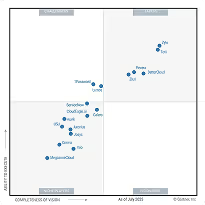HIPAA Compliance Checklist for 2025

Enterprise SaaS adoption has exploded in the past five years, and so has the complexity of managing costs, licenses, and redundant tools. According to Gartner, software spend will reach $1 trillion globally by 2027, driven largely by SaaS usage.
Another Statista report shows companies waste 30% of their SaaS budget each year due to underused licenses and overlapping tools.
That’s why more organizations are now adopting SaaS optimization platforms to bring spending under control.
This guide breaks down what these platforms do, why they matter, and the 10 best SaaS optimization platforms for enterprise companies, starting with CloudEagle.ai.
TL;DR
- SaaS optimization platforms help enterprises track spend, monitor usage, and eliminate waste across hundreds of SaaS tools.
- They reduce costs by reclaiming unused licenses, consolidating duplicate apps, and improving renewal negotiations.
- CloudEagle.ai leads the market with deep usage insights, renewal intelligence, and automated optimization workflows.
- Platforms like CloudEagle, Flexera, Snow, LeanIX, and BetterCloud support enterprise-scale SaaS management.
- Optimization is essential as SaaS costs rise and visibility declines across large organizations.
What Are SaaS Optimization Platforms?
SaaS optimization platforms help enterprises track SaaS usage, spending, licenses, vendors, and renewals in one centralized dashboard. They identify unused subscriptions, consolidate duplicate tools, and uncover opportunities to optimize SaaS spend across departments.
These platforms have become essential for enterprise SaaS optimization as software stacks grow more complex.
What they typically include:
- Centralized visibility into all SaaS applications
- Insights into usage, inactive licenses, and overlapping tools
- Automation for license reclamation and right-sizing
- Renewal and contract tracking to prevent surprise renewals
- Recommendations to optimize SaaS spend and reduce waste
These capabilities make them a critical part of modern SaaS cost optimization tools and enterprise spend governance.
Why Enterprise Companies Need SaaS Optimization in 2025
Enterprises now operate with ecosystem-scale SaaS landscapes, often exceeding 250–600 applications. Without automation, these environments quickly become inefficient and expensive.
Here’s why enterprises are embracing SaaS cost optimization tools:
- BetterCloud reports the average company now uses 130+ SaaS apps, many unmanaged
- Licenses go unused for months, costing companies millions annually
- Overlapping tools create redundant spend across teams
- Decentralized purchasing makes it impossible to track all contracts manually
- Finance and IT need real-time visibility into costs and usage
By using an enterprise SaaS optimization platform, companies can optimize SaaS spend, eliminate waste, and enforce cost governance across their entire tech stack.
10 Best SaaS Optimization Platforms for Enterprise Companies
1. CloudEagle.ai
CloudEagle.ai is a leading SaaS optimization platform built for enterprise environments that need visibility, automation, and real-time cost governance.
It combines SaaS discovery, access governance, cost optimization, and renewal management into one unified solution, making it a powerful SaaS savings platform.
CloudEagle stands out because it connects IT, finance, procurement, and security in one platform, helping enterprises reduce spend, eliminate duplicates, and streamline renewals.
Features
- Complete SaaS discovery with visibility into sanctioned and shadow IT
- Identify duplicate and redundant apps for consolidation and rationalization
- Self-service app catalog with role-based access
- Automated onboarding and offboarding across all SaaS tools
- License usage analytics with granular activity-level insights
- Automated license reclamation for unused or inactive seats
- Renewal management with alerts, owner tracking, and usage-based insights
- Centralized contract repository with spend history and terms
- Benchmarking data to negotiate better vendor pricing
- AI-driven insights to optimize SaaS spend across tools and categories
- Integrations with Okta, Entra ID, HRIS, finance systems, and 500+ SaaS apps

Benefits
- Significant cost reduction — customers save 15–30% using usage-based license optimization
- Eliminates unused licenses — reclaimed automatically through workflows
- Stronger vendor negotiation — backed by usage, contract, and benchmarking data
- Zero surprises at renewal — complete visibility into upcoming renewals
- Unified spend management — connects financial and usage data
- Improved security posture — identifies abandoned, risky, or shadow apps
- Full lifecycle management — from discovery to renewal to optimization
- Cross-team collaboration — IT, finance, and procurement aligned in one dashboard
Pricing
Typically ranges from $5,000–$50,000+/year, depending on company size and SaaS complexity.
2. BetterCloud
BetterCloud is one of the earliest and most recognized names in the SaaSOps category. Built to help IT streamline SaaS operations, it focuses on workflow automation, user actions, and enforcing security policies across applications.

While it’s not a dedicated SaaS optimization platform, many enterprise teams use it to reduce SaaS clutter, clean up unused access, and bring more discipline to SaaS environments. BetterCloud is ideal for companies prioritizing governance and operational efficiency.
Features
- Automated SaaS operations workflows
- User lifecycle management (provisioning/deprovisioning)
- Policy-based actions and access controls
- Monitoring of sensitive user activity
Limitations
- Limited cost optimization and financial insights
- More focused on IT automation than on spend reduction
Pricing
Custom pricing; typically mid-to-enterprise range.
3. Flexera One
Flexera One is an enterprise-focused platform built for organizations managing hybrid IT, SaaS, on-prem software, cloud infrastructure, and licenses.

It offers deep visibility into utilization and compliance, making it a strong fit for large companies with complex software footprints. Flexera’s strength lies in asset intelligence and spend governance, helping enterprises streamline budgets across entire digital ecosystems.
Features
- Hybrid IT and SaaS spend intelligence
- Software license optimization
- Vendor and contract insights
- Cloud + SaaS cost governance
Limitations
- Complexity may overwhelm mid-market teams
- Higher cost compared to SaaS-first tools
Pricing
Custom pricing (often >$100k/year for large enterprises).
4. Snow Software
Snow Software is known for its comprehensive software asset management platform, offering deep discovery and spend analytics for SaaS and software. Enterprises choose Snow for visibility into usage, compliance, and licensing across distributed teams.
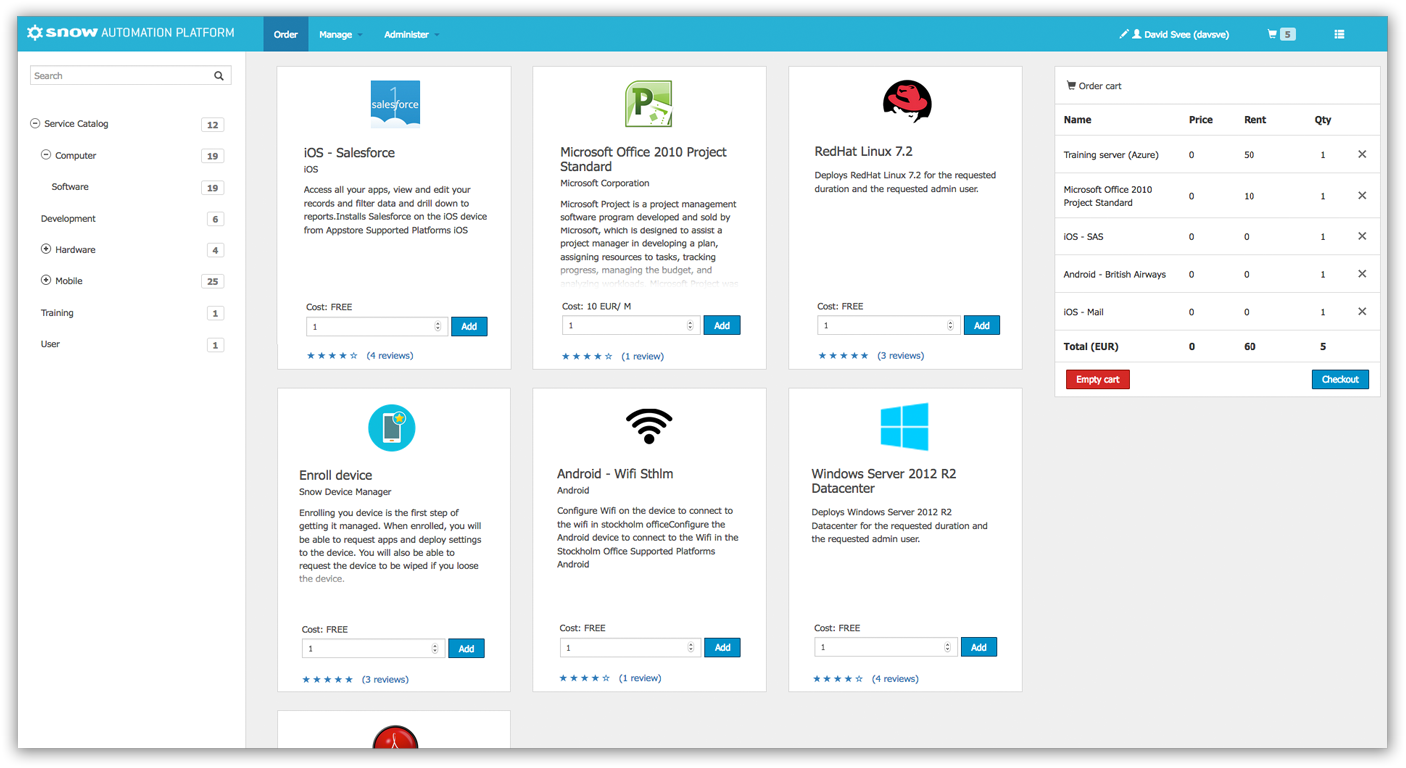
It helps companies identify waste, monitor vendor performance, and maintain continuous cost control.
Features
- SaaS and software discovery
- Usage monitoring and compliance alerts
- Spend forecasting and reports
Limitations
- Limited automation for license reclamation
- Higher price point for enterprise deployments
Pricing
Typically $150,000/year for enterprise setups.
5. CoreView
CoreView specializes in Microsoft 365 optimization and governance, making it valuable for enterprises heavily invested in Microsoft ecosystems.
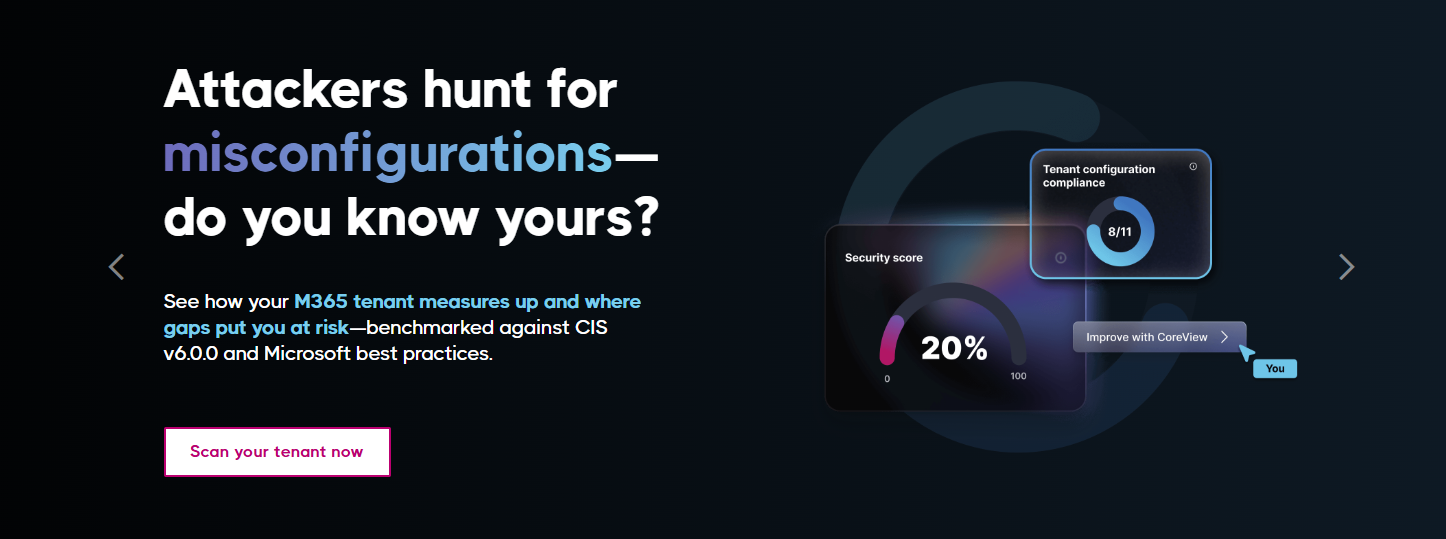
It helps reduce license waste, improve usage efficiency, and automate administrative tasks across M365. While its broader SaaS coverage is limited, CoreView excels in deep Microsoft cost optimization.
Features
- Microsoft 365 license optimization
- Usage analytics and permission insights
- Automated M365 admin and security workflows
Limitations
- Limited support for non-Microsoft SaaS tools
- Not suitable for companies needing multi-SaaS optimization
Pricing
Custom enterprise pricing.
6. G2 Track
G2 Track offers clean, visual dashboards that make SaaS spend and usage easy for finance and IT teams to understand. It focuses on renewals, contracts, and spend governance, providing simple workflows for eliminating waste.
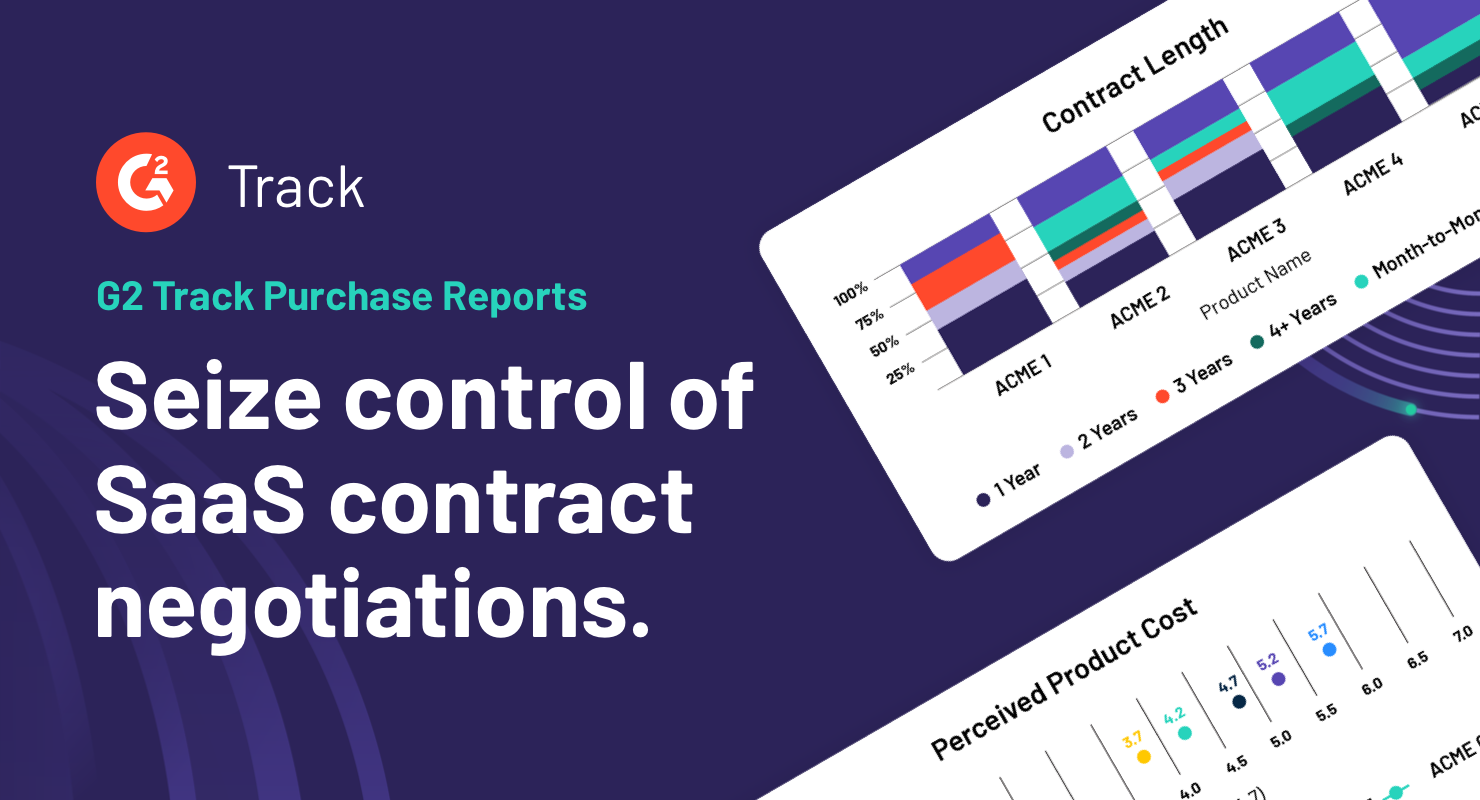
Its lightweight approach makes it a good fit for teams wanting easy-to-digest insights without heavy configuration.
Features
- Spend tracking dashboards
- Contract and renewal alerts
- License usage insights
Limitations
- Limited automation capabilities
- Not ideal for complex enterprise stacks
Pricing
Starts around $5,000/year.
7. LeanIX
LeanIX combines enterprise architecture with SaaS discovery and optimization, enabling companies to visualize their entire tech stack.

It helps enterprises rationalize applications, identify redundancies, and align technology ownership across departments.
Particularly valuable for organizations undergoing transformation or modernization initiatives.
Features
- SaaS discovery and usage visibility
- Application portfolio management
- Redundancy and duplication detection
Limitations
- Requires architectural expertise
- Not a pure cost optimization tool
Pricing
Custom enterprise pricing.
8. Cleanshelf (by LeanIX)
Cleanshelf, now part of LeanIX, is known for strong SaaS spend visibility and optimization insights.
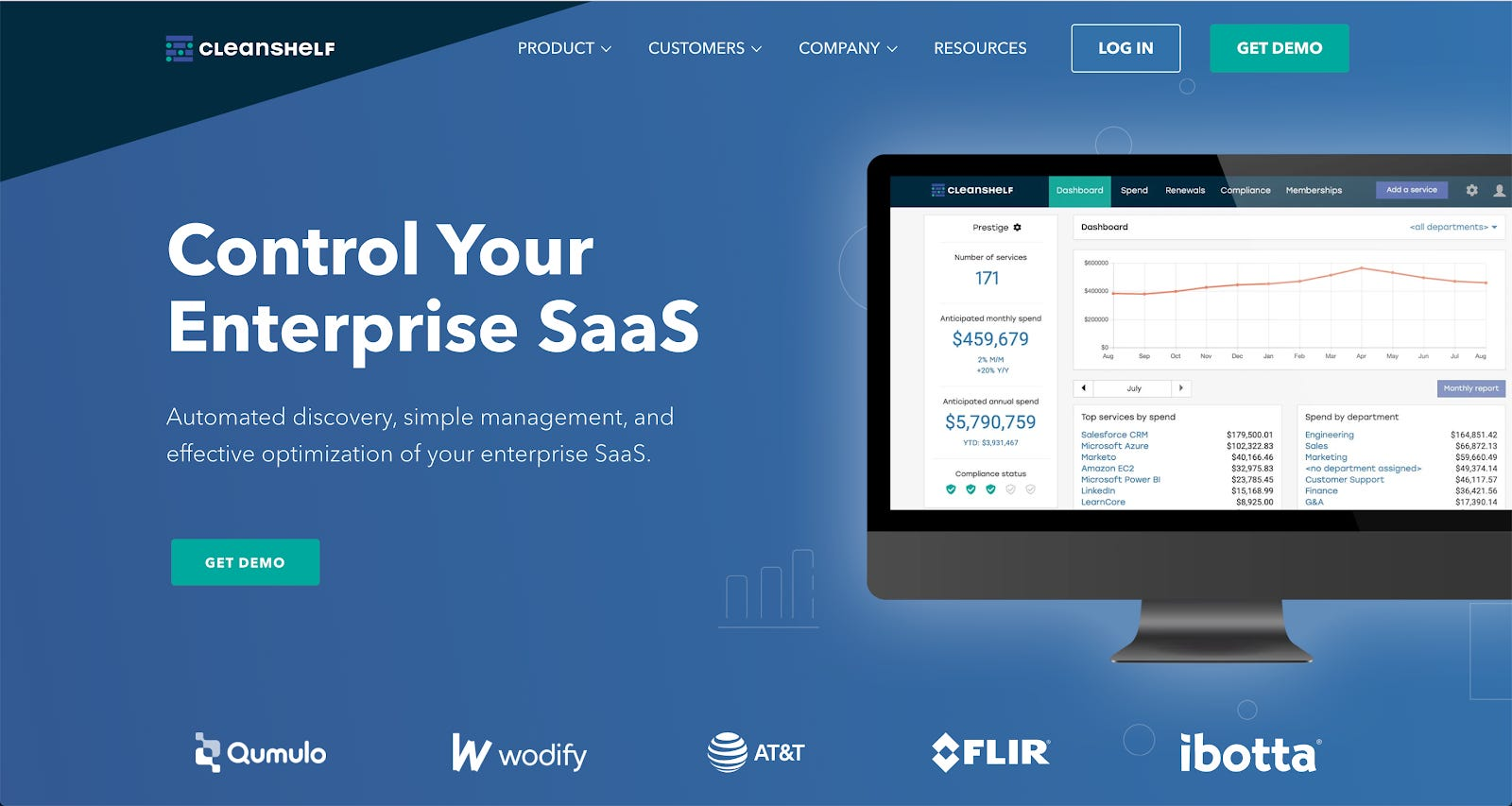
It monitors license activity, tracks vendor contracts, and identifies opportunities for right-sizing and consolidation. Finance and procurement teams appreciate its clean reporting and renewal management features.
Features
- Spend analytics and waste reporting
- License activity insights
- Renewal and vendor tracking
Limitations
- Less advanced automation post-acquisition
- Merging functionality with LeanIX may limit standalone capabilities
Pricing
It offers Custom pricing.
9. IBM Turbonomic
IBM Turbonomic is an AI-driven optimization platform for cloud, applications, and infrastructure, with SaaS optimization capabilities.

Enterprises use it for performance tuning, resource allocation, and cost governance across complex environments.
It’s best suited for organizations managing hybrid cloud + SaaS ecosystems.
Features
- Performance and resource optimization
- Usage analytics and cost governance
- Automated scaling recommendations
Limitations
- More cloud-focused than SaaS-specific
- Steeper learning curve for non-technical teams
Pricing
Custom enterprise pricing.
10. ManageEngine Application Control Plus
ManageEngine ACP offers app-level governance, usage monitoring, and access control, primarily focused on security and operational efficiency.
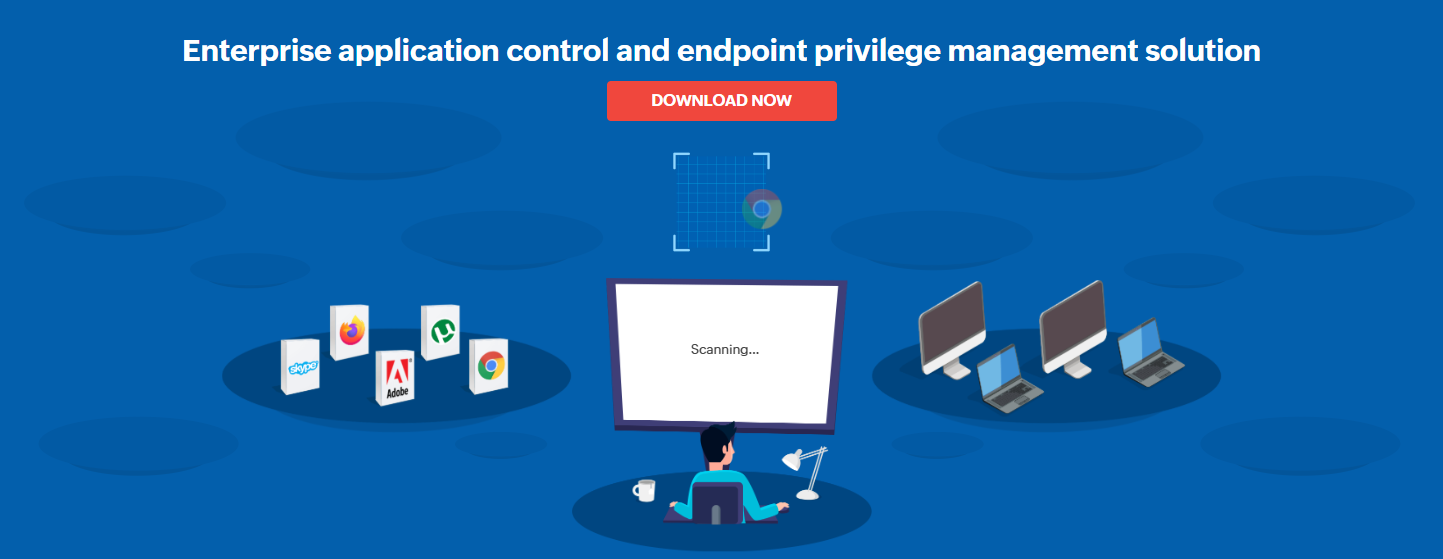
While not a complete SaaS optimization platform, it supports cost reduction by identifying unused applications and enforcing usage restrictions.
Features
- Application discovery and categorization
- Usage and access monitoring
- App-level restrictions and controls
Limitations
- Limited financial insights and optimization features
- More suited to security teams than procurement/finance
Pricing
Starts around $1,200/year.
How SaaS Optimization Platforms Work
SaaS optimization platforms work by connecting to your SaaS applications, SSO provider, finance tools, HRIS, and contract data to give enterprises a real-time view of usage, spending, and renewal risks.
Instead of relying on scattered spreadsheets, these platforms automate the entire optimization workflow.
1. Connect to Your SaaS, SSO, HRIS, and Finance Systems
The platform integrates with tools like Okta, Microsoft Entra ID, Google Workspace, HRIS, and ERP systems to pull accurate usage and cost data.

What it enables:
- Unified visibility across all apps
- Automatic user and license discovery
- Real-time syncing of employee lifecycle changes
2. Analyze License Usage and Activity Data
Once connected, the platform evaluates active vs. inactive users, seat utilization, login patterns, and feature usage.

What it enables:
- Identification of unused or low usage licenses
- Accurate user-by-user activity insights
- Detection of redundancy across applications
3. Surface Optimization Opportunities
AI models analyze your usage patterns, spend trends, and contract terms to deliver automated recommendations.
What it enables:
- Right-sizing license tiers
- Reclaiming unused seats
- Consolidating duplicate tools
4. Manage Renewals and Contract Lifecycles
The system centralizes vendor contracts, renewal dates, and ownership to eliminate surprise renewals.
What it enables:
- Early renewal reminders
- Usage-backed negotiation leverage
- Vendor comparison and rationalization
5. Automate Savings and Governance Workflows
Enterprises can trigger automated workflows to reclaim licenses, deactivate unused accounts, or enforce app policies.
What it enables:
- Continuous cost control
- Automated cleanup of license waste
- Stronger governance across teams
Key Features of SaaS Optimization Platforms
Below are the essential capabilities every enterprise should expect, written in the exact RBAC-style structure you approved.
Spend Visibility and Cost Tracking
Provides a centralized dashboard to view all SaaS spending across departments, business units, and vendors. Shows real-time and historical spend trends.

Benefits:
- Eliminates blind spots in SaaS budgets
- Highlights overspending instantly
- Helps finance forecast budgets accurately
License Usage Analytics
Tracks user activity, logins, feature adoption, and utilization rates across all SaaS tools. Helps teams find underused or unnecessary licenses.

Benefits:
- Reduces wasted spend on unused seats
- Improves negotiation leverage using accurate data
- Supports data-driven license tier decisions
Usage insights make right-sizing far more precise.
Renewal and Contract Management
Centralizes all contracts, renewal dates, terms, and vendor contacts into one system so teams never miss a renewal.

Benefits:
- Prevents auto-renewal traps
- Improves negotiation outcomes
- Ensures ownership and accountability for each app
Renewal intelligence ensures no tool slips through the cracks.
Automated Optimization Insights
Uses AI to recommend cost-saving actions based on usage, pricing benchmarks, redundancies, and contract terms.
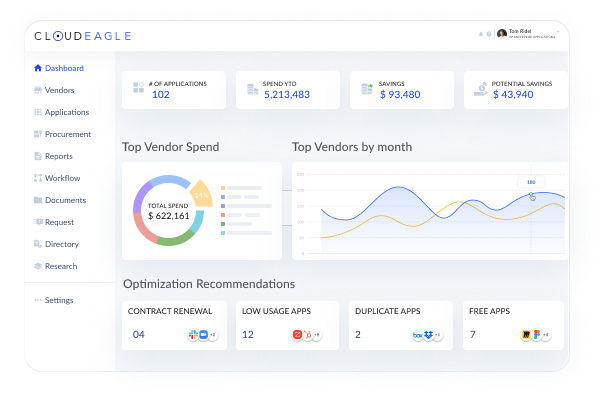
Benefits:
- Finds savings opportunities instantly
- Highlights consolidation possibilities
- Delivers continuous optimization without manual analysis
Final Verdict
Enterprises are spending more on SaaS than ever, but most of that spend is unmanaged, untracked, and under-optimized. Manual processes simply can’t keep up with modern SaaS volume, making automation essential.
A SaaS optimization platform gives companies the visibility, insights, and automation needed to eliminate waste, improve app usage, manage renewals, and optimize SaaS spend at scale. With budgets tightening, having the right platform is no longer optional.
For organizations seeking deeper insights, real-time visibility, and automated cost savings, CloudEagle.ai is the leading choice, bringing cost optimization, license governance, and renewal intelligence into one unified platform.
Book a free demo and automate your compliance today.
Frequently Asked Questions
1. How do SaaS optimization tools help reduce costs?
They track usage, identify unused licenses, detect duplicate tools, reclaim inactive seats, and provide data-driven recommendations to right-size contracts and reduce unnecessary SaaS spending.
2. Which SaaS optimization platforms are best for large enterprises?
CloudEagle.ai, Flexera One, Snow Software, LeanIX, and BetterCloud are top choices due to their scalability, automation, deep visibility, and strong optimization insights for complex enterprise environments.
3. How do SaaS optimization platforms identify unused or duplicate apps?
They analyze login activity, access patterns, feature usage, and spend data. If users aren’t active or multiple apps serve the same purpose, the system flags them for consolidation or removal.
4. What are the 5 steps of optimization?
Discovery, usage analysis, waste identification, license/contract right-sizing, and continuous monitoring. These steps help companies optimize SaaS spend and maintain long-term savings.

%201.svg)










.avif)




.avif)
.avif)




.png)
